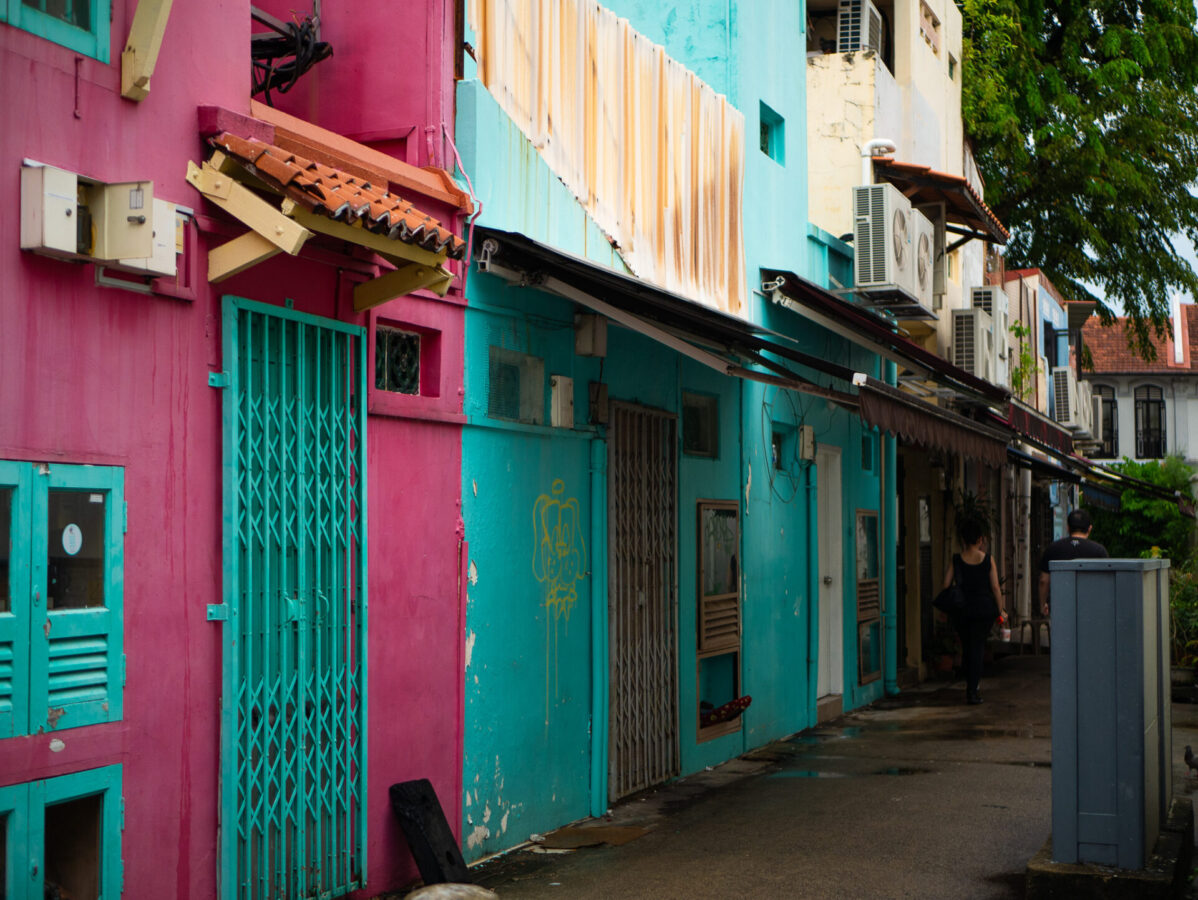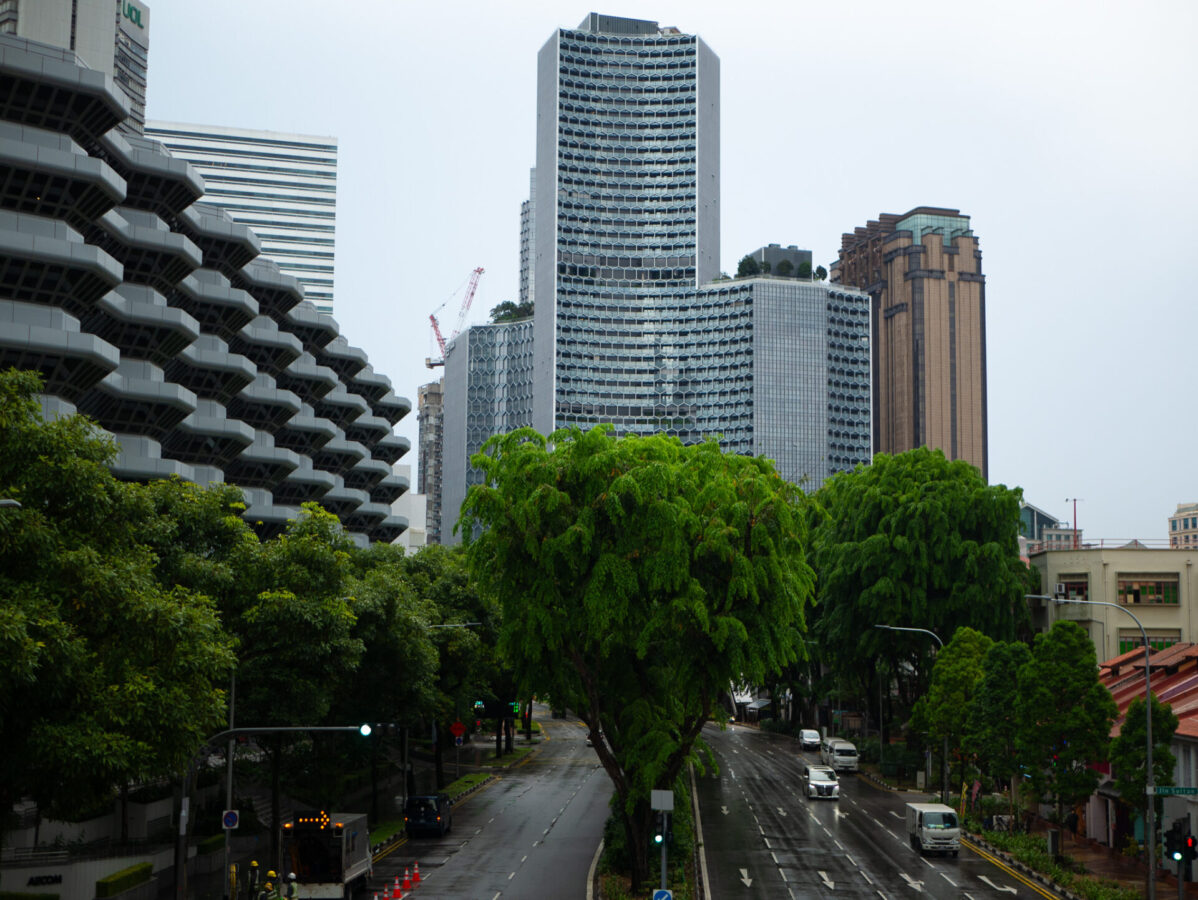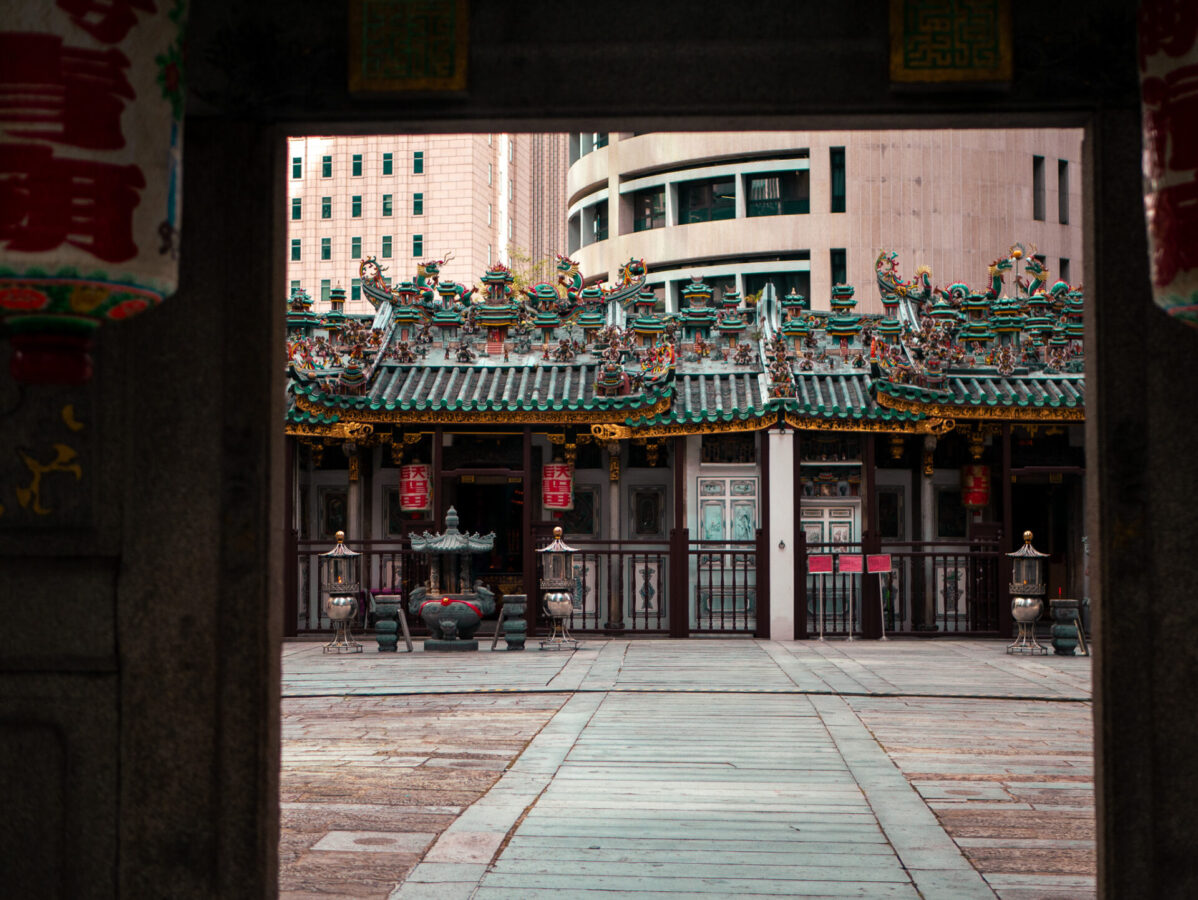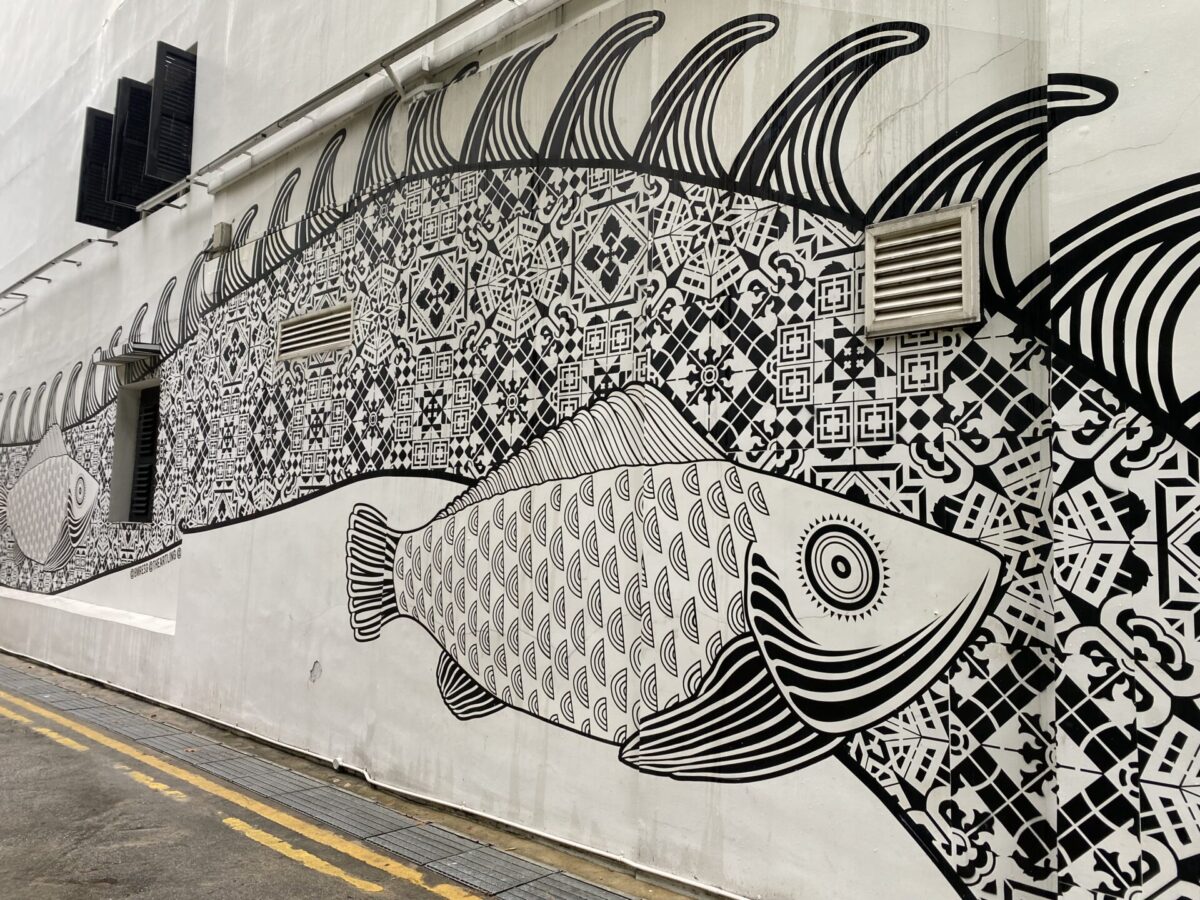Before visiting Singapore, I wasn’t sure how I would like it. I was excited to visit this tiny Southeast Asian city-state, but I didn’t know much else about it except that it was very clean and modern, its population was largely immigrant, and that there was a waterfall falling from the roof in the airport.
I learned tons more about Singapore during my 24 hours that I spent there. Firstly, it’s technically an island, and it used to be apart of Malaysia, its northern neighbor. While the population of Singapore is largely immigrant at almost 50 percent, the nation as a whole is incredibly diverse (much like Malaysia) with influences from China, India, Malaysia, and other Asian countries. They also have four official languages (Mandarin, Malay, Tamil, and English)!
We gave ourselves 24 hours to explore this city before moving onto our main Southeast Asia itinerary. However, after just one day we were totally hooked and wish we had allocated a bit more time to spend there. The city is huge, it’s super diverse, there is a ton of culture, and there is so much to do (yes, even free things)!
And while maybe many Southeast Asia backpackers overlook Singapore because of its small size or steeper price tag, it is entirely a city worth exploring. Singapore is definitely the most expensive country in this part of Asia, and so my goal in this post is to hopefully shed light on some easy ways to save your money while visiting this fascinating city steeped in culture and history. Below I have included where you can stay, what to eat, how to get around, and things to do for backpackers on a budget in Singapore. At the end, I’ve also written about a few important Singaporean laws that any new visitor should know about. Enjoy!
Where to Stay on a Budget in Singapore

Hostels in Singapore are pricier than the rest of Southeast Asia. A dorm bed will set you back anywhere from $30-$70 SGD (or around $20-$50 USD) a night. You can find lower priced private rooms on AirBnB or Booking.com as well, for around $100 SGD ($74 USD).
We stayed in Boat Quay, which was an ideal area as there are tons of hostels, restaurants and bars around, with a lively night scene. Other popular areas to stay are Chinatown and Little India. Both offer budget accommodation options and are good areas to be based in the city. Each of these areas are relatively near each other and can be accessed via metro.
What to Eat for Cheap in Singapore

If you’re on a budget in Singapore, then you are in luck. Rather than spend lavishly at some of the local restaurants, I urge you to go eat at some of the many amazing hawker stalls in the city. Hawker stalls are basically like food courts with numerous privately owned stalls serving up many, many varieties of delicious food and drinks. You will find traditional Chinese, Indian, Malaysian food and more. They are common throughout this part of Asia and are a must-do when visiting in my opinion.
Since there are so many hawker stalls throughout the city, it’s hard to know which ones to choose. There are two large ones that are popular with the locals, including Old Airport Road and East Coast Road. There are even some Michelin recommended hawker stalls in Singapore, too.
Aside from these, my best advice is to avoid the polished, fancy-looking hawker stalls and stick to the no-frills, bare bones hawker stalls. In my experience, the “fancy” polished ones were more expensive and the food wasn’t nearly as good. The only exception to this is Satay Street, just outside of the Christmas-light-strewn (though unimpressive) Lau Pa Sat hawker center. While most of the food I tried inside this hawker center was overpriced and not very good, we stopped at Satay Street to get some meat skewers at the end. The seating outside was packed with people munching on these scrumptious meat sticks and though it was a bit expensive, our tastebuds were thrilled. These satay skewers were probably my favorite thing I ate in Singapore!
Other than the hawker stalls, 7-Eleven is really popular all around Asia and has cheap food and snacks available too. This might seem weird to any Americans reading, because 7-Elevens are just gas station stops in America, but they are a bit different here in Asia! They sell ready-to-eat food items like toasties and bao buns (which they heat up for you) and a pretty big selection of other food items as well as your typical convenience store products. We stopped in the 7-Elevens a few times to grab a cheap breakfast or snacks for the day which helped make our time in Singapore a bit more affordable.
How to Get Around in the Lion City

The metro in Singapore is a godsend! It is clean, modern and super convenient. (To be honest, it puts all American metros to shame.) During the day we spent there, we exclusively used the metro and found it to be suitable for most of our needs.
In Singapore, you can buy a Singapore Tourist Pass, which can be used in unlimited amounts for 1, 2, or 3 days. The cost ranges from $22 SGD to $34 SGD, and you get a $10 refund when you return the card. This pass also includes unlimited rides on the bus system as well. Not all stations have these cards, but we were able to purchase our card when we first hopped on at the Changi Airport. When returning the card, be sure you go to a station that has the correct kiosk so that you can get your $10 refund back.
There are also plenty of taxis and Grabs (Asia’s version of Uber) available to get you around, too, though these will cost more. Note: It is illegal in Singapore (unlike much of Southeast Asia) for the taxi drivers to operate without the meter going, so you don’t have to worry about getting ripped off by your driver.
Free & Cheap Things to Do in Singapore

If you are coming to Singapore and have a tight budget or are planning to travel long-term (like us), then you’ll be pleased to learn that there are a ton of really cool, free or inexpensive things to do in the city. Below I have listed a few of the main things to do, though this isn’t an exhaustive list. We personally found ourselves wandering the streets in different neighborhoods and finding little gems all around. My advice to you would be to follow this list but don’t be afraid to get lost exploring – you might find a cute neighborhood or a new temple!
Visit the Indoor Waterfall at Singapore Changi Airport
I was told many times before arriving in Singapore that the airport was a m a z i n g. In fact, that is one of the main things I heard about the city before arriving there. Naturally, when we got off the plane at the Singapore Changi airport, the first thing I wanted to do was explore it. Despite the fact that we had been travelling for somewhere close to 24 hours from New Zealand with very little sleep, this fact about the airport made me want to hold off on securing our hour-long trip to our hostel.
Indeed, the Singapore Changi airport is unique in that there are gardens featured throughout, and of course because of its most famous feature – a waterfall that comes out of the ceiling. If you are coming to Singapore, chances are you will be in the airport at some point during your stay, so this one won’t be so out of the way.
Admire the Architecture in Singapore

You won’t have to do much except explore around the city to find unique skyscrapers everywhere. Singapore has some of the most unique city architecture I’ve ever seen.
Take a Photo of the Statue at Merlion Park
Yeah, yeah, it’s just a statue. But it’s a unique statue of a massive, white lion head with a fish tail that is spurting water into the bay. Singapore is known as the “Lion City” so this statue is a tribute to that. Also, given that it’s located in Marina Bay, here you will have views of some of the incredible architecture in Singapore.
Visit Chinatown
I’ve learned that Chinatown is always a good idea, no matter what city in the world you’re in. You can find cheap amazing food and adorable lantern-dotted streets filled with tiny food stalls or shops. The Chinatown in Singapore is no exception!
Stroll through an Ancient Chinese Art Park, Haw Par Villa
With free entry, going to this park is a no-brainer for anyone on a budget in Singapore. It is an old art park with themes surrounding various Chinese morals and stories. We thought it was super interesting, and many of the information boards are translated to English, so you can read along and learn about the scenes and what they mean in Chinese culture.
There is an addition to this park, called Hell’s Museum, which does have an entrance fee of $20 SGD. We did not do this part, but the next time I come to Singapore I’m going to try it out because it’s supposedly really good!
Wander through the Colorful Streets of Kampong Glam

Eager for a taste of Middle Eastern or Islamic culture? Kampong Glam is your spot. In this adorable, colorful and lively mostly Islamic enclave, you will find Middle Eastern as well as Malaysian restaurants, gift shops, and a glamorous gold-domed mosque towering over the streets.
If you are a fan of visiting different places of worship, the Masjid Sultan Mosque here offers free tours to visitors at certain times of the day. Based on my experience traveling through Singapore and Malaysia, (two countries with a strong Muslim influence), I doubt there will be many other opportunities to visit a mosque in such a way. I would’ve done it if the tours were still operating that day!
They do walk-in visits Saturday through Thursday from 10 am to 12 pm and 2 pm to 4 pm. You will need to wear modest clothing (similar to Muslim clothing) if you want to visit.
Explore Little India
Want to get a taste of India? This is your spot. You will find lots of delicious Indian food as well as little shops all around the neighborhood. This area is lively with murals, colorful buildings and lots of opportunity to immerse yourself in Indian culture and heritage.
Visit Some of Singapore’s Many Temples

Take your pick of temples here. There are Taoist, Buddhist, and Hindu temples all over the place, some of them famous for their architecture or age. Do note that if you plan to visit any temples, you may be required to cover yourself up (shoulders, chest and knees), especially if you are a woman.
There are so many temples in Singapore that you will probably find some just by wandering around the city. However, here are a few notable ones to start with:
Sri Marriamman Temple – Oldest Hindu temple in Singapore
Sri Sivan Temple – Stunning temple shaped like an octagon
Thian Hock Keng Temple – One of the oldest and most popular in Singapore
Yueh Hai Ching Temple – A historically significant temple with an elaborate roof design
Take a Break from the City
Thankfully, Singapore has some large natural areas in the city where you can get some fresh air and even see some wildlife. These include the following:
Southern Ridges Canopy Walk – This canopy walk has 10 km of trails, located high in the tree canopy!
Singapore Botanic Gardens – In addition to the thousands of tropical plants that call this park home, there is also a National Orchid Garden with 60,000 orchids!
Sungei Bulow Wetland Reserve – This nature preserve is home to wetlands and mangrove forests, as well as lots of native wildlife species. It’s a great place for bird watching or just going for a stroll through nature.
Nightlife in Singapore
Boat Quay and Clarke Quay are two closely located areas by the river that are full of hostels, guesthouses, restaurants and bars. This is a lively area all times of the day but especially at night. This is where I would recommend for drinks and nightlife if you want to have a night out. However, just know that if you’re on a budget, drinking in Singapore is expensive and you might want to wait for your cheap nights out if you are planning to go elsewhere in Southeast Asia. (You won’t find $2 beers here like you will in Thailand)!
A Note On Some Singaporean Laws

What I learned while visiting Singapore is that it is a very orderly nation. They have no tolerance for poor behavior and thus have laws regarding many things that people in neighboring countries and even Western countries take for granted. It would be a good idea to familiarize yourself with the following laws before visiting:
- Littering is illegal. They take cleanliness very seriously and fine people for these simple offenses that many people around the world do with no repercussions.
- When eating at places like hawker stalls, it’s illegal to leave your dirty plates on the table. You are required to clean up your plates after eating and put them in the appropriate stations.
- Chewing gum is illegal. Again, this goes with the cleanliness theme.
- Druken or public fighting is not tolerated. You could get arrested and/or fined. Just don’t do it.
- Jay walking is illegal. I’ve heard of tourists getting fined for doing this, and we tried to avoid it, but when we saw other locals doing it, we sometimes endulged as well.
- There are strict smoking areas, and you can’t smoke outside of them for risk of getting fined. Vapes are also completely illegal in Singapore, period.
- No tauting is allowed, which is when someone tries to sell you something to the point of harassment. This one you will be thankful for, especially if you are going to visit some other Southeast Asian countries where tauting is not only legal but impossible to avoid.
- Another helpful law is that taxi drivers cannot legally rip you off. They must always have the meter running and they can get fined for not doing so.
Have an Amazing Time in Singapore!
Thanks for reading and I hope this post helps you to plan an amazing (and affordable) time in Singapore! Let me know in the comments how it went. 🙂



Leave a Reply